Offboarding Blocksic
Offboarding Blocksi requires different steps depending on whether you are uninstalling the extension from one OU or all OUs.
If you are offboarding Blocksi from all OUs, this requires uninstalling the Blocksi Enterprise Edition (BEE) extension and the Blocksi Domain app.
If you are offboarding Blocksi from one OU, this requires removing all user licenses from that OU and uninstalling the Blocksi Enterprise Edition (BEE) extension.
If you are offboarding Blocksi from Microsoft Intune Azure, you can uninstall the extension from your Intune console for all users and devices or for specific users and devices.
You can offboard Blocksi from all OUs or from one OU.
To offboard Blocksi from all OUs, you must uninstall the Blocksi Enterprise Edition Extension and the Blocksi Domain App.
To uninstall the extension from your Google Admin Console
Sign in to the Google Admin console using your Google Admin or Microsoft credentials.
Click Devices.
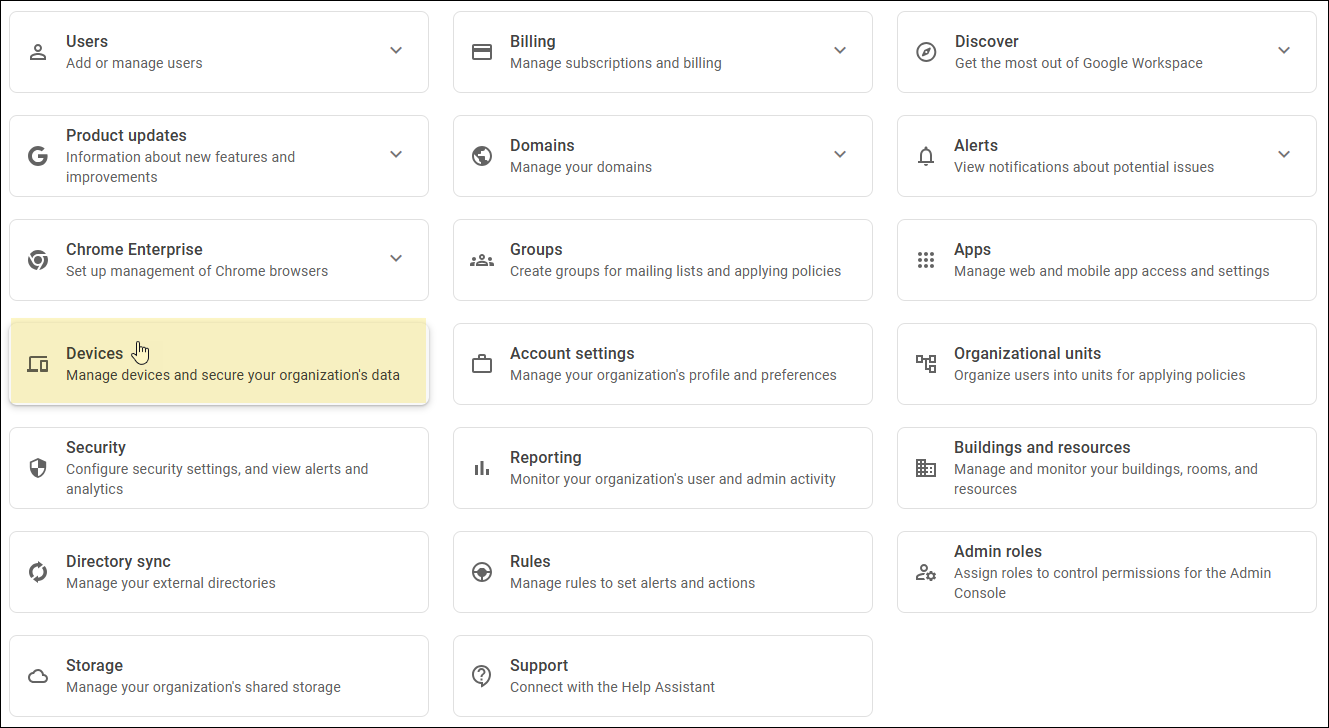
Click Chrome devices.
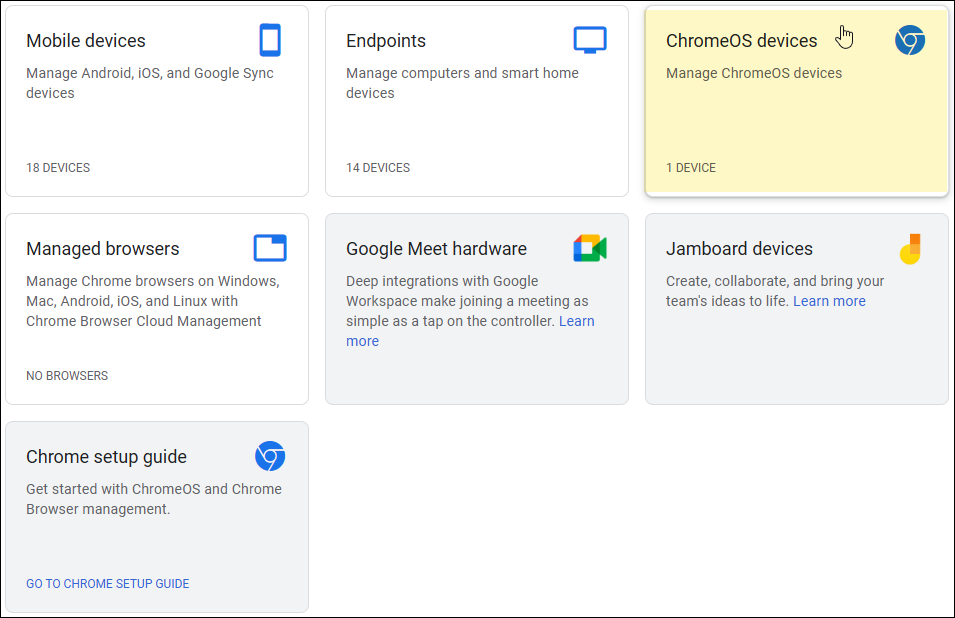
Click Apps & extensions from the Main Menu to the left.
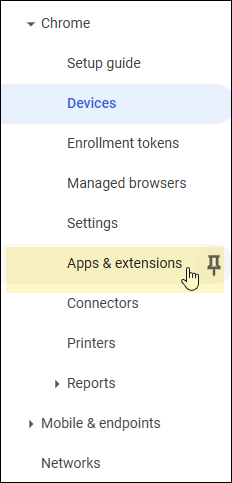
Click Users & browsers. The Users & browsers tab opens.

Select and highlight the organizational unit (OU) from which to remove the extension.

Click the Blocksi Enterprise Edition extension. The following information appears to the right.
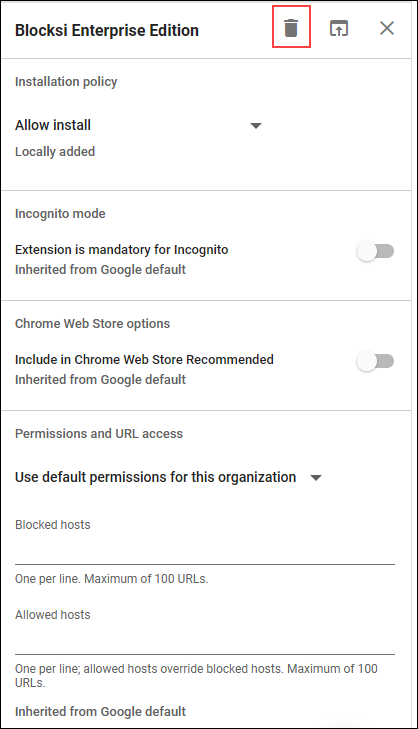
Click the
 icon. A confirmation prompt appears.
icon. A confirmation prompt appears.Click DELETE. The extension is removed from your Google Admin Console.
To uninstall the Blocksi Domain app from your Google Admin Console
Sign in to the Google Admin console using your Google Admin or Microsoft credentials.
Click Apps.
Click Google Workspace Marketplace apps > Apps list.

Click Blocksi Manager Education Everywhere. The following screen appears.

Click DELETE APP. A confirmation prompt appears.
Click DELETE APP. The Blocksi Domain app is removed from your Google Admin Console.
To offboard Blocksi from one OU, you must remove licenses and uninstall BEE.
To remove licenses from one OU
Sign in to the Blocksi Admin Dashboard using your Google Admin or Microsoft credentials.
Click Organizations and Entities from the Main Menu and then click Google Workspace Organizations , Azure AD Groups , or LDAP OU from its sub-menu. The Organizational Units screen appears.
Locate the OU for which you want to remove licenses. You may have to click the
 icon to the left of the OU name to expand the tree.
icon to the left of the OU name to expand the tree.Click the
 icon to the right of the OU name to open the edit window, as shown below.
icon to the right of the OU name to open the edit window, as shown below.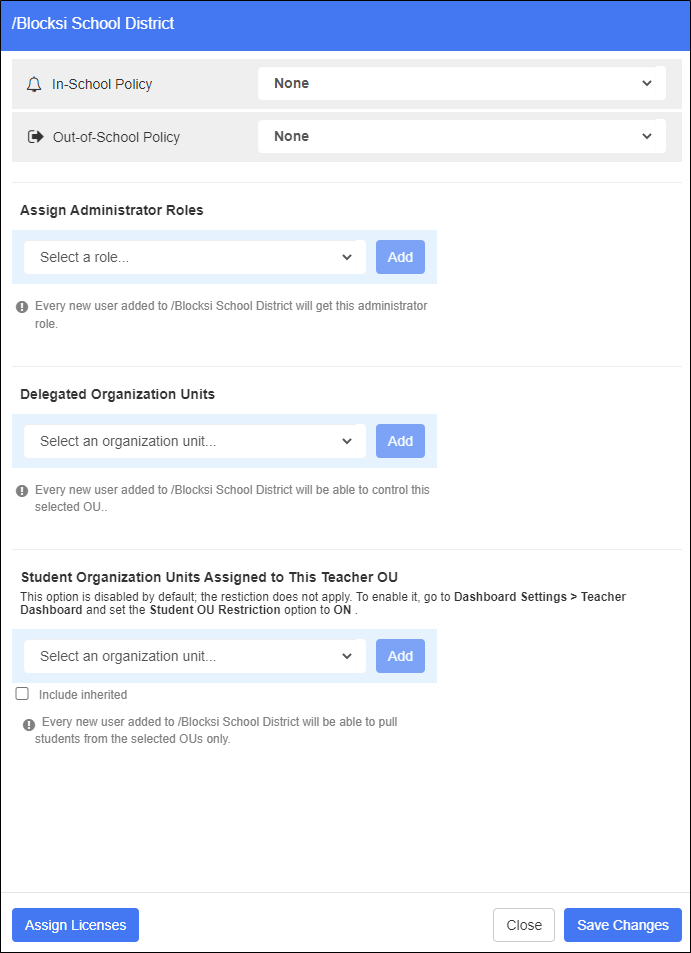
Click Clear Licenses. All licenses are removed from the selected OU.
To uninstall the extension from your Google Admin Console
Sign in to the Google Admin console using your Google Admin or Microsoft credentials.
Click Devices.

Click Chrome devices.

Click Apps & extensions from the Main Menu to the left.

Click Users & browsers. The Users & browsers tab opens.

Select and highlight the organizational unit (OU) from which to remove the extension.

Click the Blocksi Enterprise Edition extension. The following information appears to the right.

Click the
 icon. A confirmation prompt appears.
icon. A confirmation prompt appears.Click DELETE. The extension is removed from your Google Admin Console.
Offboarding Blocksi requires different steps depending on whether you are uninstalling the extension from all users and devices or specific users and devices.
To uninstall the extension from your Intune console for all users and devices
Sign in to the Microsoft Intune console using your admin credentials.
Navigate to the Devices menu from the landing page.
Select Configuration profiles under the Policy section. Here you will find a profile for Chrome configuration. In our case, it is called Windows 10 - Chrome configuration.
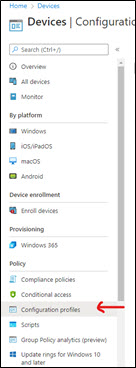
Click the Windows 10 - Chrome configuration profile configuration.
Click on the Properties button in the side menu. Here you will see Custom OMA-URI Settings in the Configuration settings section.

Click Edit.
Under the Configuration settings tab, look for the OMA-URI Setting with the name Chrome ADMX - ExtensionInstallForceList or something similar. The important thing is that the OMA-URI value of the setting is ./Device/Vendor/MSFT/Policy/Config/Chrome~Policy~googlechrome~ Extensions/ExtensionInstallForcelist.

Click the three dots next to this setting and click Delete. This removes the extension from all of the users and devices it was configured for.
Click Review+Save and click Saveagain. Don’t forget to Sync the devices for changes to apply.
To uninstall the extension from your Intune console for specific users and devices
Sign in to the Microsoft Intune console using your admin credentials.
Navigate to the Devices menu from the landing page.
Select Configuration profiles under the Policy section. Here you will find a profile for Chrome configuration. In our case, it is called Windows 10 - Chrome configuration.

Click the Windows 10 - Chrome configuration profile configuration.
Click the Properties button in the side menu, and then click the Edit button next to the Assignments title.
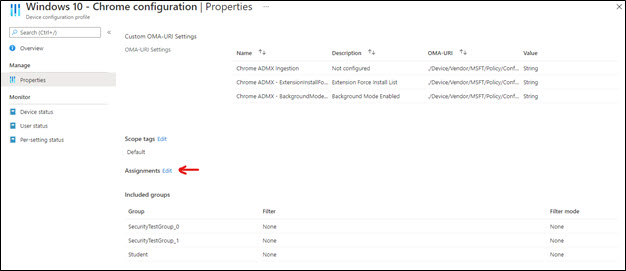
Remove the group from the Included groups table for which you want the extension to be uninstalled.
Click Review+Save and click Save again.
Don’t forget to Sync the devices for changes to apply.
Note
The change may take a few minutes to apply to all of the devices.